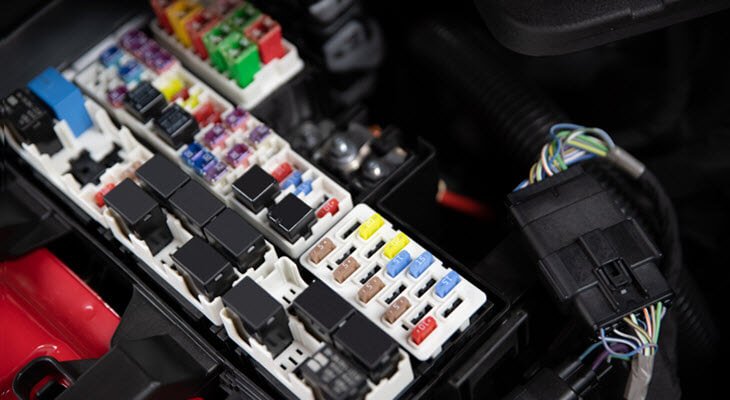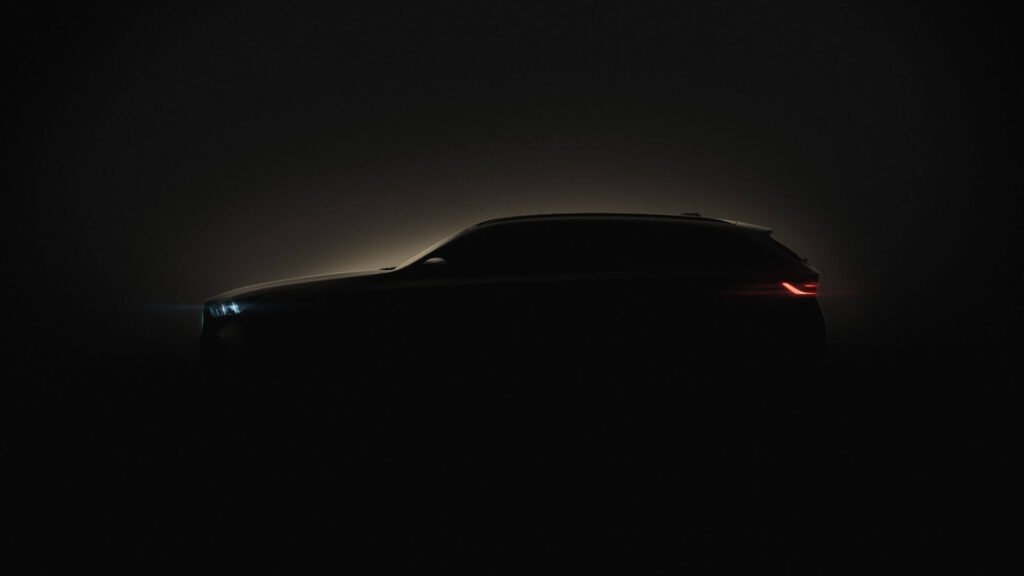BMWs are famous for being high-quality and having the latest technology. But like any car, there can be times when it has problems. One issue that BMW owners sometimes face is a parking lamp not working.
BMW parking lamp problems can be resolved by checking and replacing faulty bulbs, fuses, or damaged wiring. However, if the issue continues, it’s best to let the experts handle the troubleshooting and repairs to ensure a safe and effective solution.
How to Fix BMW Parking Light Issues?

Check the Bulbs
The first thing you’ll want to do is check the bulbs. A blown bulb is the most common reason for parking lamp malfunctions. You can check it by doing the following:
- Locate the parking lamp housing on the front and rear of your BMW.
- Carefully remove the lamp housing cover or access panel. This can usually be done by gently prying the cover with a flathead screwdriver or using the specified tool provided in your vehicle’s toolkit.
- Once the cover is removed, inspect the bulb for any signs of damage or a burned-out filament. If you find a blown bulb, replace it with a new one. Make sure to use the correct bulb type for your BMW model.
Check the Fuse

If the bulb replacement didn’t solve the issue, the next step is to check the fuse that controls the parking lamps. Here’s how to check the fuse:
- Read your BMW’s owner’s manual to find the fuse box. It’s usually located in the glove compartment, under the dashboard, or in the trunk.
- Open the fuse box and find the fuse labeled for the parking lamps. The owner’s manual will have a diagram showing its location and amperage rating.
- Inspect the fuse to see if it’s blown. A blown fuse will have a broken wire, while a functional fuse will have a continuous wire.
- If the fuse is blown, replace it with a new fuse of the same amperage rating. Using the correct amperage is crucial to avoid potential electrical issues.
Check the Wiring
To check the wiring, follow these steps:
- Inspect the wiring around the parking lamp housing for any visible damage like cuts, exposed wires, or corroded connections. Pay close attention to the areas near the lamp housing and along the wiring harness.
- If you find any damaged wiring, secure and protect the exposed area using electrical tape or heat-shrink tubing.
- If the damage is severe, it’s recommended to seek professional assistance for repair or replacement.
Check the Switch and Relay
If the problem continues, it could be due to the parking lamp switch or relay. The switch is used to turn the parking lamps on and off, while the relay controls the electricity flow to the lamps. Here’s how to check these components:
- Turn the ignition on (without starting the engine) and switch on the parking lamps.
- Listen for a clicking sound near the fuse box or relay panel when you turn on the parking lamps. This sound indicates that the relay is working correctly. If you don’t hear any sound, the relay may be faulty and require replacement.
- Test the parking lamp switch by toggling it on and off. If you notice any resistance or inconsistency in its operation, it may need to be replaced.
Seek Professional Help
If you’ve followed all the steps mentioned above and your BMW’s parking lamp issue still persists, it’s time to get help from a qualified mechanic or an authorized BMW service center. They have the expertise and specialized tools to accurately diagnose and fix complex electrical problems.
What Does a Parking Lamp Do?

A parking lamp is a part of the car we often forget exists, as it’s only a small part of a far complex system. You may notice when you shift in reverse than a small light appears that helps you illuminate the area at night or in poor visibility. The parking lamp’s job is to make sure that your car is visible when parked, and it does this by sending out a signal in the form of a light.
Switching on the parking lamp switch creates a circuit that powers the parking lamp bulb. The electricity flows from the battery, through the fuse box, and then into the wiring to light up the bulb and activate the parking lamp. It’s important to have a fuse for the parking lamp to avoid electrical overload.
When the parking lamp switch is turned off, the circuit is broken, the flow of electricity is stopped, and the bulb is turned off.
In some modern vehicles, the operation of the parking lamps may be controlled by an electronic control unit (ECU) or body control module (BCM). These computerized systems can automatically activate and deactivate the parking lamps based on inputs from light sensors or based on the vehicle’s ignition status.
Basic Structure of a Parking Lamp

The basic structure of a parking lamp consists of three fundamental elements:
- The parking lamp’s source of light is crucial. In modern designs, LED bulbs are commonly employed for their energy efficiency and long lifespan. However, older models may utilize halogen or incandescent bulbs.
- The lens is a see-through cover that protects the bulb and bends the light to make things easier to see. The lens is usually made from top-notch plastic or glass and is often designed to concentrate or scatter the light in certain patterns.
- This is the part that holds the bulb and lens together. It’s usually designed to direct the light from the bulb through the lens in the desired direction.
How Does a Parking Lamp Work?

While it may come as a surprise, the parking lamp works just like any lamp. But to give you some more insight into the working principle, there’s more info below:
Power Source
The parking lamp’s operation starts with the car battery, the heart of your vehicle’s electrical system. The battery is essentially a storage device that holds electrical energy, ready for use. When the vehicle is running, the alternator ensures the battery stays charged.
For the parking lamp to work, the battery provides the necessary direct current (DC) electrical power. This electrical power flows from the battery along an insulated wire known as a ‘live’ or ‘hot’ wire, towards the switch controlling the parking lamp.
Activation
The switch that controls the parking lamps is typically situated on the dashboard or steering column of your car. When you turn on this switch, it closes an electrical circuit.
An electrical circuit is a closed loop through which electric current can flow. In its simplest form, a circuit includes a power source (the battery), a load or device (the parking lamp bulb), and conductive paths (wiring) between the power source and the device.
When the switch is off, it interrupts the circuit. But when you turn on the switch, it bridges this gap and completes the circuit. This action permits electricity to flow from the battery, via the ‘hot’ wire, through the switch, and onto the parking lamp.
Light Production
From the switch, the electrical current travels along another wire to the parking lamp bulb. The type of bulb, whether incandescent, halogen, or LED, determines the process of light production:
Incandescent and Halogen Bulbs: These bulbs have a thin wire filament made from tungsten. When the electrical current reaches this filament, it heats up. The heat energy causes the filament to glow and produce light, a process known as incandescence. The primary difference between halogen and incandescent bulbs is the halogen cycle, which allows halogen bulbs to last longer and emit brighter light.
LED Bulbs: In an LED bulb, the electrical current flows into a semiconductor material. This material’s properties cause it to emit light when an electric current passes through it – a process called electroluminescence. LED bulbs are more energy-efficient and longer-lasting compared to incandescent and halogen bulbs.
Light Emission
Once the bulb produces light, it must be efficiently and effectively emitted. This is where the lens and housing of the parking lamp come into play.
The lens is a transparent cover, typically made of robust plastic or glass. Its purpose is to protect the bulb and refract (bend) the light to enhance its visibility. The housing ensures that the light is channeled in the desired direction, usually out and slightly to the side of the vehicle.
The light emitted by the parking lamp enhances the visibility of your car, making it easier for other road users to see and gauge its position and dimensions, especially in low-light conditions or at night.
Deactivation
When you turn off the light switch, it opens the circuit. An open circuit cannot carry an electric current. This halts the flow of electricity from the battery to the bulb.
Without an electrical current heating its filament or activating its semiconductor, the bulb goes dark, and the parking lamp is deactivated.
Conclusion
A BMW parking lamp problem can often be resolved by checking and replacing faulty bulbs, fuses, or damaged wiring. These troubleshooting steps are relatively simple and can be performed by most car owners. However, if the issue persists or if you encounter difficulty during the process, it’s best to seek professional assistance to ensure a safe and effective solution.
Fixing the battery is quite easy but you have to follow some basic steps: start by checking the bulbs for any signs of damage or burnout. If the bulbs are fine, check the fuse to ensure it’s not blown. Next, inspect the wiring for any visible damage and secure any exposed areas with appropriate materials.
If the problem persists, test the parking lamp switch and relay, and replace them if necessary. If all else fails, seek professional help from a qualified mechanic or BMW service center.

